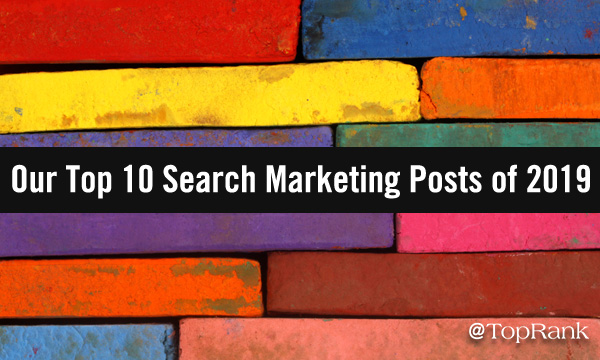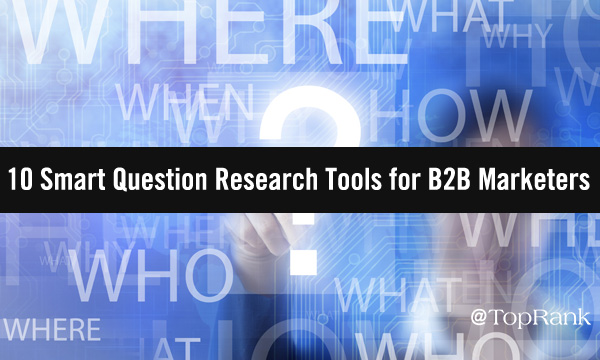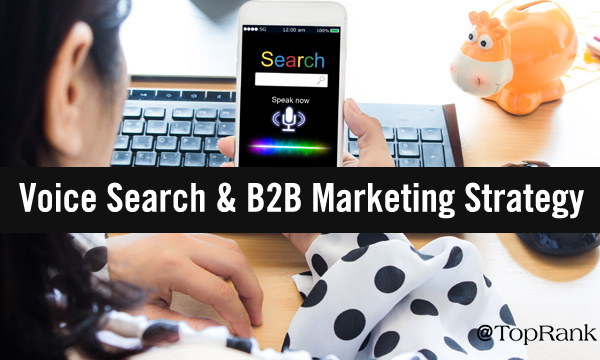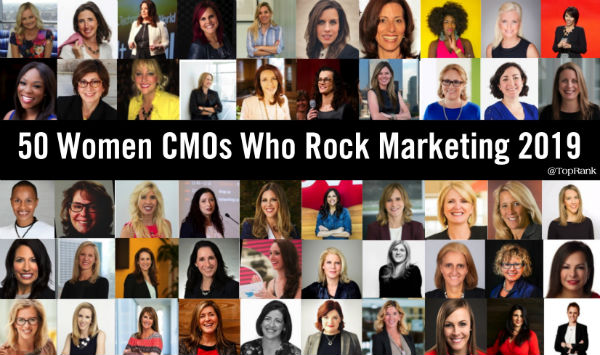How Mobile Has Impacted the Customer Journey written by John Jantsch read more at Duct Tape Marketing
The customer journey is influenced by many outside factors. As the use of mobile devices has taken off over the past decade, it’s changed the way that businesses market themselves and how customers interact with businesses.
In order to better understand the impact mobile has had on the customer journey, it’s helpful to go through and assess the effect at each stage of the marketing hourglass. By better understanding how mobile changes customers’ behaviors, you can begin to adapt your marketing strategy to meet their evolving needs.
Mobile in the First Stage: Know
How do people discover a new business? Before the days of computers, it was all print and television ads, word of mouth, or simply driving by your storefront. Now, there are dozens of channels for people to encounter your brand. And mobile only further diversifies the field.
In some ways, mobile has shortened the customer journey. Mobile searches with the phrase “near me” and “can I buy” or “to buy” increased by 500 percent between 2015 and 2017. That boost means people are turning to mobile to discover immediate solutions to their problems. By entering this search term, they’re able to quickly check out your website, read reviews, and even find your hours and location on a map. What would have taken more in-depth research in the past is now condensed into a few minutes and a handful of clicks on a mobile device.
It’s also important to remember that not everyone finds you via an internet browser search. With the advent and rise of mobile apps, some people are discovering businesses through a specific app. For example, those who search for local businesses on the Yelp app are only being presented with businesses who have a presence on Yelp. If you haven’t claimed your profile there, you’re not going to be discovered at all. So making sure your business’s profile is claimed on the major local listings sites, like Yelp and Google My Business, is critical to winning at mobile.
For that same reason, you need to have a presence on social media. Some people turn to Facebook or Instagram for advice on which local businesses to patronize. Again, you’re not even going to be in the running if you don’t have a profile on those sites!
How Mobile Influences the Like and Trust Phases
Once someone’s discovered you online, they want to get to know you better. And to do that, they need to be able to learn more about you. Just like you wouldn’t get married after the first date, prospects want to make sure you’re the right fit before they dive in.
You want your content to build that familiarity and trust, while being easy to consume on a mobile device. That starts with creating content that can be enjoyed on the go. Podcasts are an easy listen for folks who are on their commute, and video is often a bite-sized way to share meaningful information that builds trust and authority.
Social media is also critical in this stage. Posting regularly on social media means that those who discover you on mobile can do a quick inventory of who you are and what you do by scanning backwards through your recent content.
For those who aren’t looking to make an immediate purchase, social media remains a great way to stay top-of-mind on mobile devices. People often check their social media accounts multiple times a day, and so if you’re appearing at the top of their newsfeeds each time they log in, you build that familiarity quickly.
Advertising can also help you stay top of mind. Social ads are a way to remain omnipresent on prospects’ feeds. And display ads allow you to keep you name on people’s minds even when they visit other websites from their phone’s browser.
How to Try on Mobile
When we get to the try phase of the customer journey, mobile has an important role in ensuring that customers don’t slip away at this critical stage.
Mobile tactics can help to facilitate the try process by making it easy to prospects to sign up for a demo or appointment. A smart use of chat or SMS marketing techniques can make it easy for you to automate the sign-up process, while providing prospects with a more personalized encounter with your business.
Newer technologies like augmented reality (AR) are changing the way people try on their phones. Take furniture store IKEA as an example. They built an app that allows prospects to try out a piece of furniture in their home through the power of AR. Prospects can point their phone at an empty corner of their room, select the sofa, chair, or lamp that they’re considering, and see on their screen what the item would look like in their home.
While AR technology might not be readily accessible to all small businesses yet, it’s definitely a trend to watch, as more and more retailers incorporate it into their marketing strategy.
Mobile Makes it Easy to Buy
A recent survey found that 79 percent of smartphone users had made a purchase on their phone within the past six months. So not only are folks using their mobile devices for research, they’re actually doing transactions on their phones.
For any small business with an e-commerce component, it’s critical that you make it easy for people to purchase via mobile. This is all about creating a customer experience with the least amount of friction in the buying process. Make it easy for people to navigate to their cart. Don’t ask for lots of additional information in the checkout process–only collect information necessary to process the transaction.
After the initial purchase has been made, great mobile UX can also help facilitate the onboarding process. If you’re an e-commerce brand, provide updates on shipping status, and make sure that customers can easily track their packages.
No matter what kind of business you’re in, there is content that you can create in a mobile-friendly format to make it easier for new customers to get the most out of their new purchases. Put together an email series with responsive design (so it looks great on any screen, big or small!) that outlines special tips and tricks for using the new product or service.
Use Mobile to Inspire Repeat Purchases
Once you’ve gotten a prospect to convert to customer, there’s still work to do! And pushing existing customers towards a repeat purchase can be achieved with some mobile-friendly tactics.
Retargeting is a great way to bring existing customers back into the fold. You can advertise on social media or via display ads, and direct certain content towards those who have already bought from you. If someone recently made a purchase, you can target them with advertising for a related product or service in order to encourage an upsell. If a customer has drifted away over the past few months, you can show them ads welcoming them back with a special offer for return customers.
Building out a rewards program is another way to engender loyalty amongst existing customers. This can be done either through your website (which should be mobile-friendly!) or with an app specifically for your business. The additional benefit of creating an app is that you eliminate the competition. Your existing customers come directly to you via the app to make a purchase, rather than going onto the web to search for your solutions and run the risk of getting drawn in by one of your competitors with a smart SEO or paid search strategy.
Mobile and Referrals
The final stage of the customer journey is getting your customers to refer others. As I mentioned in the earlier phases, reviews are a key part of the referral process, and that’s particularly true on mobile. People who are searching for solutions on the go will turn to reviews in lieu of asking friends or family for recommendations. That’s why it’s important to make sure you’re doing the work to solicit reviews from your customers.
You can also consider creating a referral program. If you have a mobile app for your business, creating a program directly through the app is a great, easy way to help your mobile-minded customers refer their friends.
Finally, social media can help you generate referrals. Share user-generated content that sings your brands praises. Create contests and opportunities for your existing fans on social to give your brand a shout-out to their friends. Get influencers to try your product and vouch for you to their followers. A referral from a real friend or trusted influencer on social can go a long way in winning over new customers.
Mobile marketing has changed the way consumers buy, and so businesses have had to adjust their marketing accordingly. By considering how to get the most out of mobile at each stage of the customer journey, you can position yourself to reach the majority of consumers, who have become more and more focused on mobile over the years.
from Duct Tape Marketing https://ift.tt/2u0enNo
via IFTTT

 Our talented Associate Director of Search & Analytics Tiffani Allen wrote our most popular search marketing post of 2019, taking an important look at five SEO mistakes killing your content performance, and offering up an actionable fix for each. Tiffani explored how to avoid and fix keywords based solely on volume, using too much targeting, and the perils of ignoring internal link structures. Check out all of Tiffani's posts
Our talented Associate Director of Search & Analytics Tiffani Allen wrote our most popular search marketing post of 2019, taking an important look at five SEO mistakes killing your content performance, and offering up an actionable fix for each. Tiffani explored how to avoid and fix keywords based solely on volume, using too much targeting, and the perils of ignoring internal link structures. Check out all of Tiffani's posts  The second most popular search marketing post of the year is by our Senior Content Strategist Nick Nelson, who deftly explores the complicated yet complimentary relationship between SEO and social media, and shows how to maximize both in unison with your marketing efforts. Check out all of Nick's posts
The second most popular search marketing post of the year is by our Senior Content Strategist Nick Nelson, who deftly explores the complicated yet complimentary relationship between SEO and social media, and shows how to maximize both in unison with your marketing efforts. Check out all of Nick's posts  In the number three spot on our top search marketing posts of 2019 list, I explored what the future of Google search mean for B2B marketers, looking at how touch-free Motion Sense gestural search and other changes will affect the course of B2B marketing in 2020 and beyond. Check out all of my posts
In the number three spot on our top search marketing posts of 2019 list, I explored what the future of Google search mean for B2B marketers, looking at how touch-free Motion Sense gestural search and other changes will affect the course of B2B marketing in 2020 and beyond. Check out all of my posts  Our CEO Lee Odden wrote the fourth most popular search marketing post on our blog in 2019, exploring how a best-answer content strategy can drive impressive B2B marketing results, showing its value and offering up strong examples of what it takes to be the best answer. Lee shows that being the best answer is hard, but that it's the price for being in the winner’s circle of consistent top visibility. Check out all of Lee’s 2,600+ posts
Our CEO Lee Odden wrote the fourth most popular search marketing post on our blog in 2019, exploring how a best-answer content strategy can drive impressive B2B marketing results, showing its value and offering up strong examples of what it takes to be the best answer. Lee shows that being the best answer is hard, but that it's the price for being in the winner’s circle of consistent top visibility. Check out all of Lee’s 2,600+ posts  Our Senior Content Marketing Manager Caitlin Burgess earned the number five spot on our top search marketing posts of the year list, showing how B2B marketers benefit when SEO and influence collide, becoming a powerful keyword and topical research tool to create best-answer content that audiences and search engines crave. Check out all of Caitlin’s posts
Our Senior Content Marketing Manager Caitlin Burgess earned the number five spot on our top search marketing posts of the year list, showing how B2B marketers benefit when SEO and influence collide, becoming a powerful keyword and topical research tool to create best-answer content that audiences and search engines crave. Check out all of Caitlin’s posts  Nick also penned the sixth most popular search marketing post of 2019, with a detailed look at how you can modernize search marketing to fit with a fully customer-centric strategy, with insight from our guide to identifying “best answer” opportunities. Nick shows how multiple disciplines — from technical SEO to creative content — can be leveraged to win the search marketing game. [bctt tweet="“When marketers make the effort to see every side of the questions their customers are asking, we can see the bigger picture and craft content to fully satisfy the extent of a searcher’s interest.” @NickNelsonMN" username="toprank"]
Nick also penned the sixth most popular search marketing post of 2019, with a detailed look at how you can modernize search marketing to fit with a fully customer-centric strategy, with insight from our guide to identifying “best answer” opportunities. Nick shows how multiple disciplines — from technical SEO to creative content — can be leveraged to win the search marketing game. [bctt tweet="“When marketers make the effort to see every side of the questions their customers are asking, we can see the bigger picture and craft content to fully satisfy the extent of a searcher’s interest.” @NickNelsonMN" username="toprank"]
 Another of my posts made the year's top 10 search marketing post lists, exploring a number of B2B search revelations from the 2019 Cannes Lions International Festival of Creativity, with six take-aways including diversity KPIs, real-time branding, micro-storytelling, and the rise of customer-driven search journeys. [bctt tweet="“Search taking place from smart speakers and other connected voice-assisted is poised to boom in the coming years, and podcasting is expanding to offer new ways to integrate brand messaging.” @LaneREllis" username="toprank"]
Another of my posts made the year's top 10 search marketing post lists, exploring a number of B2B search revelations from the 2019 Cannes Lions International Festival of Creativity, with six take-aways including diversity KPIs, real-time branding, micro-storytelling, and the rise of customer-driven search journeys. [bctt tweet="“Search taking place from smart speakers and other connected voice-assisted is poised to boom in the coming years, and podcasting is expanding to offer new ways to integrate brand messaging.” @LaneREllis" username="toprank"]
 In our eighth most popular search marketing post of 2019, a share 10 smart question research tools and an array of savvy tactics to help B2B marketers uncover the questions your audience is asking, and provide best-answer solutions. [bctt tweet="“How can you be the best answer for your audience if you don’t understand what questions they’re asking or what problems they’re trying to solve?” — Lane R. Ellis @lanerellis" username="toprank"]
In our eighth most popular search marketing post of 2019, a share 10 smart question research tools and an array of savvy tactics to help B2B marketers uncover the questions your audience is asking, and provide best-answer solutions. [bctt tweet="“How can you be the best answer for your audience if you don’t understand what questions they’re asking or what problems they’re trying to solve?” — Lane R. Ellis @lanerellis" username="toprank"]
 With his third appearance on our search marketing top 10 list, Nick shows how B2B brands can ensure that their content strategy is aligned with the rise of voice search, and helps you find your B2B marketing voice. [bctt tweet="“B2B companies need to be less robotic, and more human. The rise of voice search is simply another trend feeding the urgency.”
With his third appearance on our search marketing top 10 list, Nick shows how B2B brands can ensure that their content strategy is aligned with the rise of voice search, and helps you find your B2B marketing voice. [bctt tweet="“B2B companies need to be less robotic, and more human. The rise of voice search is simply another trend feeding the urgency.”  Tiffani makes another appearance on our top 10 list of search marketing posts for the year, exploring how can you optimize your B2B content performance using a thoughtful and strategic SEO audit to help you understand your landscape by analyzing technical, on-page and off-page factors, and more. [bctt tweet="“A strategic and thoughtful SEO audit will result in a clear, prioritized and actionable plan to improve your search visibility in the ways it matters most to your business.” @Tiffani_Allen" username="toprank"] We can't thank Tiffani, Nick, Lee, and Caitlin enough for these top 10 search marketing posts of 2019 — congratulations on making the list!
Tiffani makes another appearance on our top 10 list of search marketing posts for the year, exploring how can you optimize your B2B content performance using a thoughtful and strategic SEO audit to help you understand your landscape by analyzing technical, on-page and off-page factors, and more. [bctt tweet="“A strategic and thoughtful SEO audit will result in a clear, prioritized and actionable plan to improve your search visibility in the ways it matters most to your business.” @Tiffani_Allen" username="toprank"] We can't thank Tiffani, Nick, Lee, and Caitlin enough for these top 10 search marketing posts of 2019 — congratulations on making the list!











 In recent years headlines like ‘
In recent years headlines like ‘ Alicia Tillman @aliciatillman Global CMO at SAP
Alicia Tillman @aliciatillman Global CMO at SAP  Bozoma Saint John @badassboz CMO at ENDEAVOR
Bozoma Saint John @badassboz CMO at ENDEAVOR  Dee Mc Laughlin @deemclaughlin SVP, Global Brand & Creative at Capital Group / American Funds
Dee Mc Laughlin @deemclaughlin SVP, Global Brand & Creative at Capital Group / American Funds  Jeanne Hopkins @jeannehopkins CMO at Lola
Jeanne Hopkins @jeannehopkins CMO at Lola  Kathy Button Bell @Emerson_KathyBB Senior Vice President, Chief Marketing Officer at Emerson
Kathy Button Bell @Emerson_KathyBB Senior Vice President, Chief Marketing Officer at Emerson  Linda Boff @lindaboff CMO at GE
Linda Boff @lindaboff CMO at GE  Meg Goldthwaite @MegZGold CMO at National Public Radio
Meg Goldthwaite @MegZGold CMO at National Public Radio  Tifenn Dano Kwan @danokwan CMO at SAP Ariba
Tifenn Dano Kwan @danokwan CMO at SAP Ariba  Oracle Content and Experience is excited and proud to announce another year, our 10th year as a leader in the Gartner Magic Quadrant for Web Content Management. This space has continually evolved to include a much broader reach for content, including creation, site management features, complex API’s, personalization, and digital asset management. Throughout that evolution Oracle has remained committed to listening to our customers and the market to ensure OCE would stay ahead of the innovation curve, provide the best of breed platform to the market and ensure their leader position in the Magic Quadrant.
Oracle Content and Experience is excited and proud to announce another year, our 10th year as a leader in the Gartner Magic Quadrant for Web Content Management. This space has continually evolved to include a much broader reach for content, including creation, site management features, complex API’s, personalization, and digital asset management. Throughout that evolution Oracle has remained committed to listening to our customers and the market to ensure OCE would stay ahead of the innovation curve, provide the best of breed platform to the market and ensure their leader position in the Magic Quadrant.
